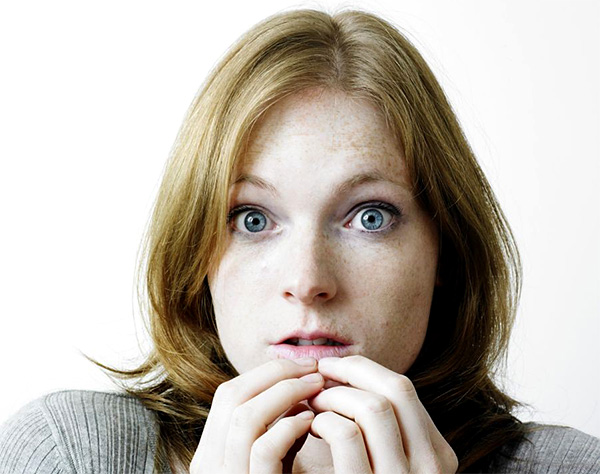Panic attack is a sudden access of intense fear or anxiety (emotional condition characterized by psychomotor restlessness, obscure fear, without reason) that cause worrisome symptoms, but not life threatening: increased heartbeat, difficulty in breathing, feelings of loss of control or impending death. Ordinarily, the symptoms last from 5 to 20 minutes and can be caused by stressful circumstances, or, just unexpected.
The body has a response to fear, which prepares the person to cope with a situation or to avoid imminent danger. Panic attack occurs when this system reacts excessively or when it is not necessary. During a panic attack, the nervous system reacts like when it has to do with a life-threatening situation. This response causes physical symptoms and feelings of concern.
Panic disorder is diagnosed when a person has repeated panic attacks, when it is concerned about the possibility of a new event and is avoiding places that can cause an attack. It is possible for a person to have panic attacks without developing a disorder related to panic attacks – occurring with anxiety disorders.
Causes
The exact cause of panic-related disorders is not known. Is believed to be the result of an imbalance of brain chemicals (neurotransmitters). It can also be passed from one generation to another (Genetic). Children of parents with such disorders were eight times at greater chance than others to develop the disease. Also, a higher risk has those who have parents with depression or bipolar disorder. Nervous tension (loss of relationships for example) can trigger symptoms of panic disorder.
– Ingestion of large amounts of alcohol or abrupt discontinuation of alcohol;
– Ingestion of large amounts of caffeinated beverages;
– Excessive smoking (further increasing the amount of nicotine in the blood);
– The use of drugs (as for the treatment of asthma and heart disease) or unexpected discontinuation of a medication (for anxiety and insomnia);
– The use of cocaine or marijuana drugs;
– A high level of stress for a long time (chronic stress);
– Having a recent childbirth;
– Surgery with general anesthesia.
Can also be associated or may be caused by some medical condition
– Thyroid dysfunction (hyperthyroidism – thyroid hormone excess);
– Heart disease, mitral valve prolapse (mitral valve shows a defect who alter the normal functioning of heart);
– Neurological disorders (epilepsy);
– Asthma (condition in which there is an intense need for air, exhaling the air from lungs will be tougher);
– Lung disease (chronic obstructive bronchopneumonia);
– Discontinuation of medication for heart disease;
– Depression;
– Anxiety, post-traumatic or obsessive stress disorder – compulsive disorder.
Symptoms
The main symptom of panic attacks is the overwhelming feeling of fear and anxiety along with other physical reactions. Symptoms appear suddenly and surprisingly, with high intensity, lasting for about 10 minutes. While most symptoms disappear in 30 minutes, others need an hour to disappear completely. It is possible for a person to have panic attacks one after another over a longer period of time, and it looks like a continuous attack. If symptoms are continuous and do not disappear within an hour, there is the possibility to exclude a panic attack, and, a doctor should be immediately consulted.
Panic attacks may occur after a stressful event or without apparent cause. It may be associated with medications (such as those for heart disease) or with certain medical conditions (hyperthyroidism)
– Rapid breathing (hyperventilation), dyspnea (shortness of breath);
– Faster, stronger or irregular heartbeats;
– Angina pectoris (chest pain);
– Sweat;
– Nausea and epigastric pain (stomach ache);
– Vertigo (dizziness), tremor, uncertainty;
– Tinnitus (ringing in the ears);
– Chills or hot flushes;
– Fear of death and loss of control;
– A sense of detachment from self or the reality.
Continue to the next page to read the full article:


